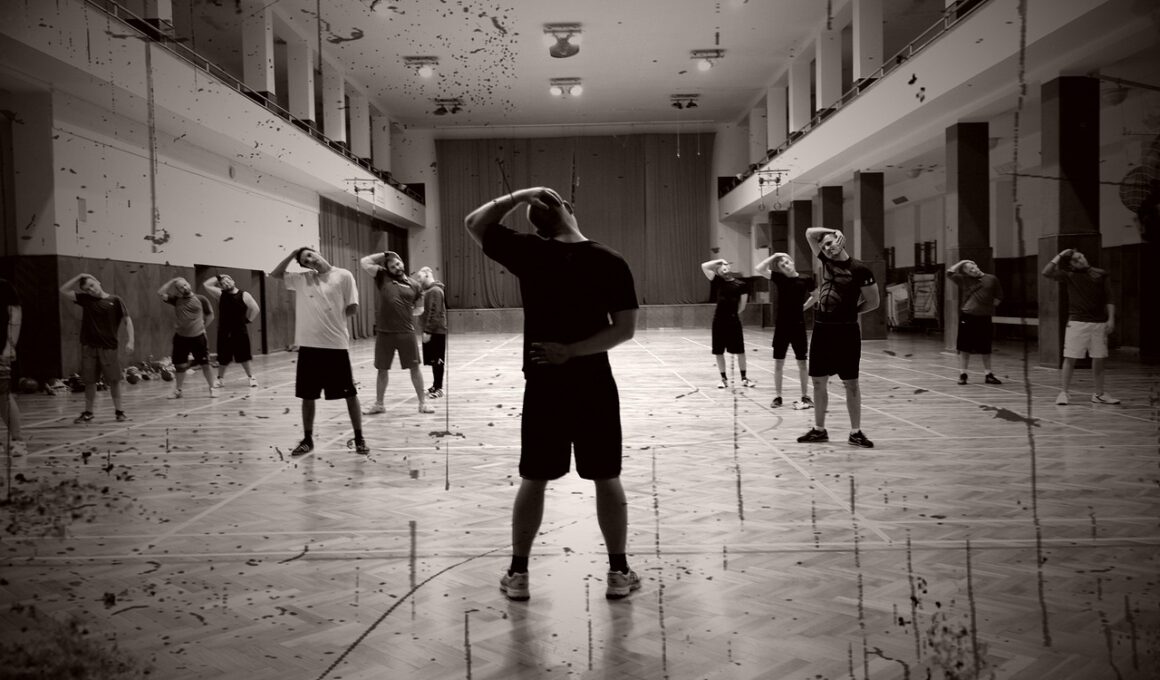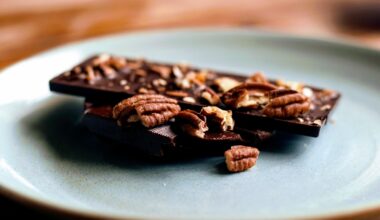Best Warm-Up and Cool-Down Exercises for Push Pull Legs Routines
Warming up properly before engaging in a push pull legs workout routine is crucial for preventing injuries and enhancing performance. A good warm-up routine enhances blood flow to your muscles, increases range of motion, and prepares your body for strenuous activity. Start your warm-up with dynamic stretches and movements mimicking the exercises you will be performing. This could include arm circles, leg swings, and torso twists. Additionally, incorporate some light cardio, such as jogging or jumping jacks, for about 5 to 10 minutes to elevate your heart rate. As you warm up, pay attention to your form. Make sure each movement is performed correctly to maximize effectiveness. A warm-up session that includes both dynamic stretches and light cardio will ensure your body is ready for the intensity of push pull legs routines. Remember, the goal of warming up is to gradually increase your heart rate, improve your flexibility, and mentally prepare you for your workout. By taking the time to warm up properly, you set yourself up for a successful and safe workout session.
Incorporating cool-down exercises after your push pull legs workout is equally significant in maintaining overall muscle health and flexibility. The primary goal of a cool-down is to help your heart rate gradually return to its resting state. After an intense workout, a sudden stop can lead to dizziness or fainting, so include 5 to 10 minutes of low-intensity activity, like walking or gentle cycling. Following this, engage in static stretching, which focuses on relaxing your muscles and improving flexibility. Target major muscle groups used during your workout, such as the quadriceps, hamstrings, chest, and back. Hold each stretch for 15 to 30 seconds, focusing on breathing deeply. Another effective cool-down method involves foam rolling, which can aid in reducing muscle soreness and improving recovery. This technique helps increase blood flow to the muscles and alleviate tightness. Effective recovery practices not only help in muscle repair but also prepare you for your next workout session. Remember, both warm-up and cool-down exercises play vital roles in your fitness journey, ensuring you train smart and stay injury-free.
Dynamic Warm-Up Exercises
Dynamic warm-up exercises are an essential component of your pre-workout routine for push pull legs sessions. These exercises include movements that involve controlled, active motions that improve your range of motion and activate your muscles. Some excellent examples of dynamic stretches include walking lunges, high knees, butt kicks, and toy soldiers. Walking lunges engage your hip flexors and quadriceps, making them ideal for leg day. High knees raise your heart rate and improve your leg mobility, while butt kicks also work to mobilize your hamstrings. Toy soldiers help stretch your hamstrings and activate your glutes and core muscles. For best results, perform each dynamic exercise for about 30 seconds, and remember to maintain correct posture throughout the movements. You’ll not only elevate your heart rate during this phase but also prepare your muscles for heavier lifts and more complex movements. Properly performed dynamic warm-ups can enhance efficiency and effectiveness during workouts, leading to better results over time. Thus, incorporating these dynamic exercises into your routine will prepare your body for your push pull legs workout.
Static stretching also plays a key role in the cooling-down phase of your workout routine. These stretches focus on lengthening the muscles that may have been tightened during your training. After your push and pull workouts, take time to perform static stretches for the muscles groups you engaged. This can involve stretches such as the chest opener, seated forward fold, or standing quadriceps stretch. Holding each position for 15 to 30 seconds promotes relaxation and blood flow to help remove lactic acid build-up. Static stretches differ from dynamic warm-ups as they focus on holding a position rather than movement. This is particularly crucial for maintaining flexibility and preventing stiffness during recovery. Remember to breathe deeply and focus on how your muscles feel during each stretch; this preference helps your mind connect with your body. It is also an ideal opportunity to assess any areas of tightness that might affect your performance in future workouts. Integrating both dynamic and static stretches can significantly contribute to overall athletic success by enhancing performance and reducing injury risk.
Importance of Foam Rolling
Foam rolling is another excellent addition to your post-workout cool-down plan. It offers numerous benefits, such as reducing muscle soreness, improving flexibility, and enhancing overall recovery. By rolling out tight areas of your body, you help release fascial adhesions or knots that can restrict movement. Focus on foam rolling your major muscle groups, including your quads, hamstrings, back, and chest after your workout. For effective rolling, spend approximately one minute on each muscle group, applying firm yet manageable pressure. Rolling should never feel painful; aim for a moderate discomfort level. Foam rolling can significantly improve blood flow to your muscles and the recovery process, allowing for better performance in subsequent sessions. Also, it offers an excellent opportunity for self-myofascial release, which aids in muscle recovery after strenuous workouts. Incorporating foam rolling into your routine enhances muscle elasticity and overall flexibility, crucial elements for effective push pull legs workouts. Investing in a high-quality foam roller can lead to noticeable improvements in muscle recovery and performance outcomes over time.
When it comes to maximizing your push pull legs routines, never underestimate the benefits of staying hydrated. Water plays a vital role in nearly every bodily function, particularly during exercise. It helps transport nutrients, regulates body temperature, and lubricates joints. Ensuring adequate hydration before starting your workout can prevent fatigue and maintain performance levels. Drink at least 16 to 20 ounces of water two hours prior to your exercise, and continue sipping throughout your workout. As a general guideline, consider drinking an additional 8 ounces of water for every 20 minutes of intense exercise. Remember to factor in climate and personal needs, as these can affect hydration levels. After completing your push pull legs workout, rehydrate by consuming water or electrolyte-rich drinks to replenish lost fluids. Staying hydrated during workouts also aids in muscle recovery and helps minimize soreness. Therefore, maintaining optimal hydration is essential for both athletic performance and proper recovery. Make sure you’re aware of your body’s signals for hydration and take action to keep your fluids balanced.
Final Thoughts
In conclusion, incorporating effective warm-up and cool-down exercises in your push pull legs routines is paramount for maximizing your workout efficiency and promoting recovery. Dynamic stretches serve as an excellent approach to preparing your body, ensuring that you’re adequately warmed up before lifting weights or performing high-intensity movements. Similarly, dedicating time to a cooldown routine, including static stretching and foam rolling, enhances flexibility and aids recovery. Don’t forget about hydration, as it plays a significant role in your overall performance. By investing in these essential components of your workout routine, not only will you enhance your performance, but you’ll also minimize the chances of injuries. Regularly practicing both warm-ups and cooldowns will contribute to better recovery, allowing you to return to the gym stronger and more focused for your next push pull legs session. Take the time to implement these practices, and watch how they profoundly impact your training journey. Remember, developing a balanced workout routine that includes these elements is vital for achieving long-term fitness success and enjoyment.


